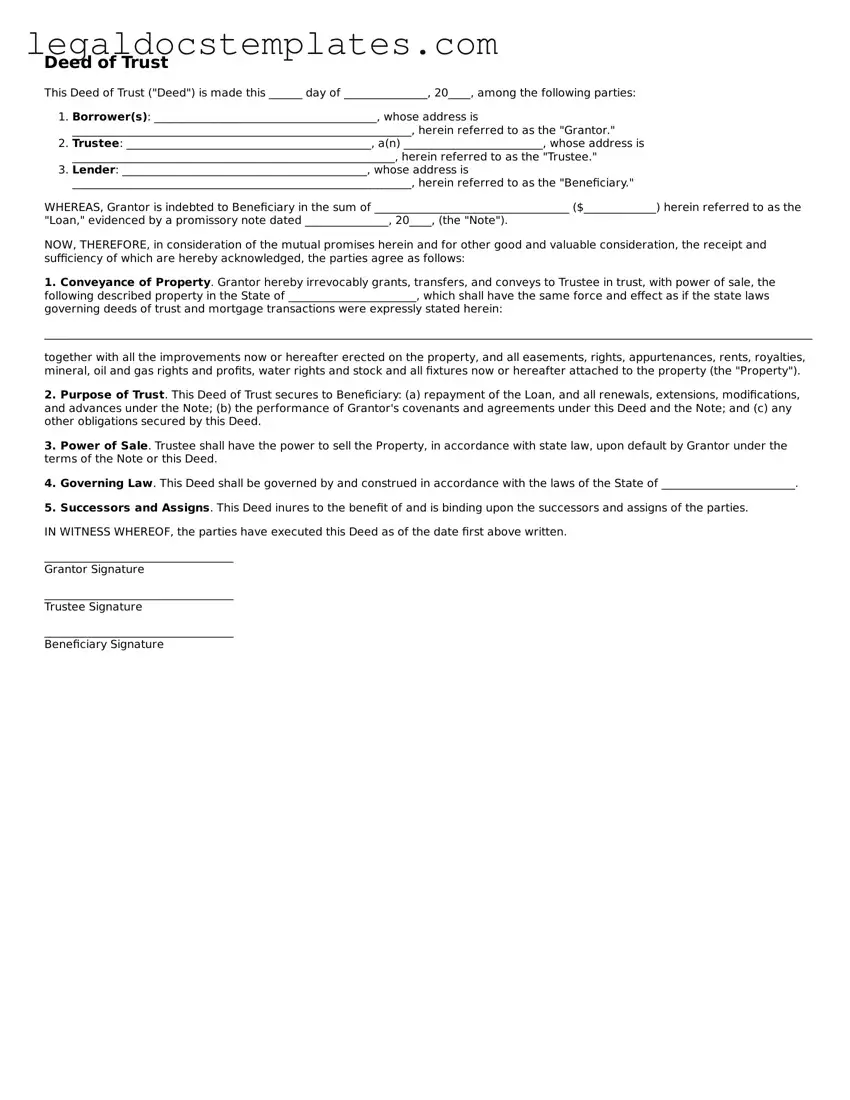Deed of Trust
This Deed of Trust ("Deed") is made this ______ day of _______________, 20____, among the following parties:
- Borrower(s): ________________________________________, whose address is _____________________________________________________________, herein referred to as the "Grantor."
- Trustee: ____________________________________________, a(n) _________________________, whose address is __________________________________________________________, herein referred to as the "Trustee."
- Lender: ____________________________________________, whose address is _____________________________________________________________, herein referred to as the "Beneficiary."
WHEREAS, Grantor is indebted to Beneficiary in the sum of ___________________________________ ($_____________) herein referred to as the "Loan," evidenced by a promissory note dated _______________, 20____, (the "Note").
NOW, THEREFORE, in consideration of the mutual promises herein and for other good and valuable consideration, the receipt and sufficiency of which are hereby acknowledged, the parties agree as follows:
1. Conveyance of Property. Grantor hereby irrevocably grants, transfers, and conveys to Trustee in trust, with power of sale, the following described property in the State of _______________________, which shall have the same force and effect as if the state laws governing deeds of trust and mortgage transactions were expressly stated herein:
______________________________________________________________________________________________________________________________________________________________________________________________________
together with all the improvements now or hereafter erected on the property, and all easements, rights, appurtenances, rents, royalties, mineral, oil and gas rights and profits, water rights and stock and all fixtures now or hereafter attached to the property (the "Property").
2. Purpose of Trust. This Deed of Trust secures to Beneficiary: (a) repayment of the Loan, and all renewals, extensions, modifications, and advances under the Note; (b) the performance of Grantor's covenants and agreements under this Deed and the Note; and (c) any other obligations secured by this Deed.
3. Power of Sale. Trustee shall have the power to sell the Property, in accordance with state law, upon default by Grantor under the terms of the Note or this Deed.
4. Governing Law. This Deed shall be governed by and construed in accordance with the laws of the State of ________________________.
5. Successors and Assigns. This Deed inures to the benefit of and is binding upon the successors and assigns of the parties.
IN WITNESS WHEREOF, the parties have executed this Deed as of the date first above written.
__________________________________
Grantor Signature
__________________________________
Trustee Signature
__________________________________
Beneficiary Signature
